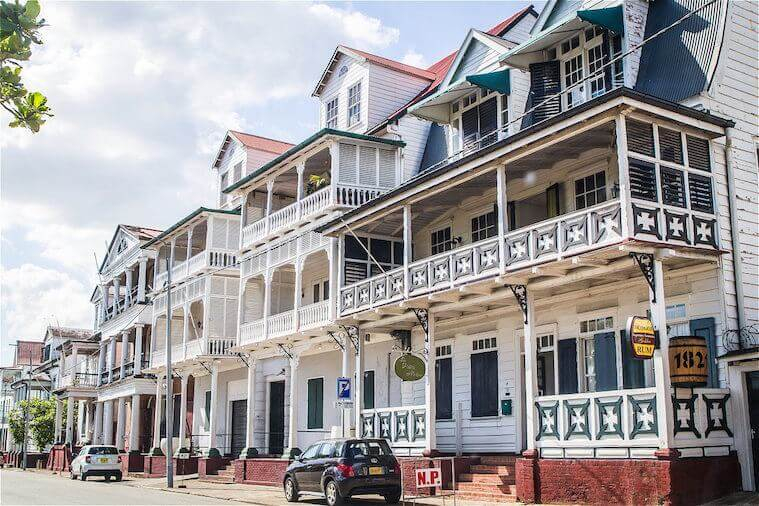Historic Inner City of Paramaribo
On the northeastern coast of tropical South America, there is a former Dutch colonial town called Paramaribo that dates back to the 17th and 18th centuries. The plain and symmetrical architectural style, which is predominately made up of wooden buildings and illustrates the gradual fusion of Dutch and other European architectural styles, later North American influences, as well as elements from Creole culture, reflects the multi-cultural Suriname society.
The Sommelsdijk Creek and the Viottekreek form the northern and southern boundaries of the Historic Inner City of Paramaribo which is situated on the left bank of the Suriname River.
The Historic Inner City of Paramaribo was constructed in 1683 on a grid pattern along an axis that runs northwest from Fort Zeelandia, the main streets run along scalloped ledges, providing a natural drainage facility for the building. Dutch town planning and building expertise allowed the Historic Inner City of Paramaribo to grow on marshes to the north in the late 18th century. Fort Zeelandia, which was established in 1667, is a significant landmark in the townscape. It is situated behind a sizable public park called the Garden of Palms, which is close to open areas and streets with plenty of trees. Furthermore, the Ministry of Finance (1841), a massive brick building with a clock tower and classical dome, the Reformed Church (1837) designed in the Neoclassical style, and the Roman Catholic Gothic Renaissance-style Presidential Palace (1730) all have wooden upper floors. Wood was also used to construct the Gothic Revival Roman Catholic Cathedral in 1885.
The increasing blending of European architectural and building methods with native South American materials and crafts to produce a new architectural idiom is particularly evident in Paramaribo. In the years of intense colonization of this region in the 16th and 17th centuries, the Historic Inner City of Paramaribo is a singular example of the interface between the European culture of the Netherlands and the indigenous cultures and environment of South America.








